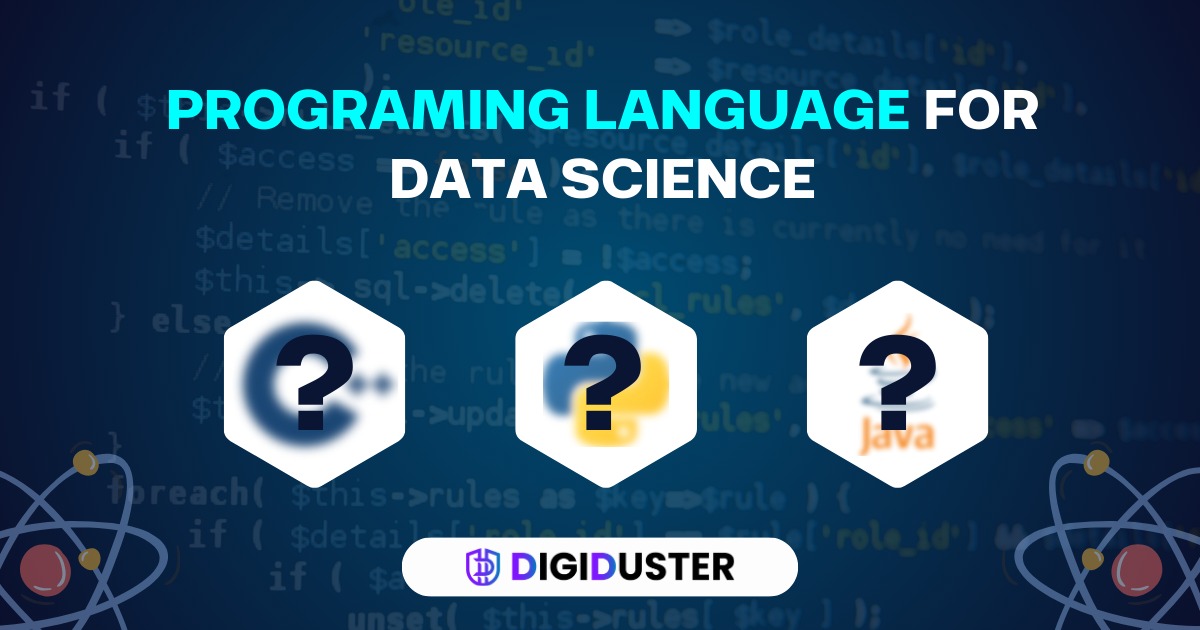Data science is one of the most exciting fields today. It powers everything from AI to business intelligence. But to work in data science, you need the right programming language. Choosing the best programming language for data science is important. It affects performance, scalability, and ease of development. With new trends like AI integration, automation, and big data, picking the right language is even more crucial in 2025. Let’s explore the top programming languages for data science and how they stack up.
Key Factors in Choosing a Data Science Programming Language
- Performance & Speed – Fast execution for handling large datasets.
- Library Support & Community Size – More libraries mean easier coding.
- Scalability for Big Data – Can it handle massive datasets efficiently?
- Ease of Learning & Adoption – Is it beginner-friendly?
- Industry-Specific Applications – Some languages work better for certain fields.
Top Programming Languages for Data Science in 2025
1. Python – The Undisputed Leader
Python is the most used programming language for data science. It’s easy to learn and has strong libraries like:
- NumPy, Pandas – For data manipulation.
- Scikit-learn – Machine learning.
- TensorFlow, PyTorch – AI and deep learning.
With constant updates, Python remains the best language for data science in 2025.
2. R – The Best for Statistical Computing
R is great for data visualization and statistics. Key features:
- ggplot2, dplyr – Advanced data visualization.
- caret – Machine learning models.
- Used widely in academia and healthcare.
3. Julia – The Rising Star
Julia is gaining popularity for high-performance computing. Why?
- Faster than Python and R.
- Interoperates with Python, R, and C++.
- Used in finance and scientific computing.
See also: Career Opportunities in Artificial Intelligence for Beginners in 2025
4. SQL – Essential for Database Management
SQL isn’t a general-purpose language, but it’s critical for data handling:
- Optimized for structured data.
- Works well with cloud databases.
- Essential for business intelligence roles.
5. Java – Enterprise-Ready and Scalable
Java is popular for large-scale applications:
- Weka, MLlib, Mahout – Machine learning libraries.
- Used in banking, finance, and large organizations.
- More stable and scalable for production use.
6. JavaScript – Best for Data Visualization & Web Analytics
JavaScript is emerging in web-based data science:
- D3.js – Interactive data visualization.
- TensorFlow.js – Machine learning in browsers.
- Great for web-based analytics and dashboards.
7. MATLAB – Strong in Scientific Computing
MATLAB is widely used in academia and engineering:
- Ideal for algorithm development.
- Strong in image processing and biomedical applications.
- Used in research institutions.
See also: How AI in Medical Diagnosis is Reducing Human Errors
8. SAS – Preferred for Business & Statistical Analysis
SAS is big in business intelligence:
- Great for handling structured datasets.
- Popular in finance, healthcare, and risk analysis.
- Used by large enterprises for predictive modeling.
9. C++ – The Foundation for High-Performance Computing
C++ is the go-to for speed and performance:
- Great for AI and big data applications.
- Used in high-frequency trading and simulations.
- Less beginner-friendly but highly efficient.
10. Swift – Emerging for AI and ML on Apple Devices
Swift is gaining traction for mobile data science:
- Works with Apple’s Core ML framework.
- Used for AI and ML on iOS devices.
- Increasing adoption in mobile data applications.
Emerging Trends in Data Science Programming Languages (2025 and Beyond)
- Low-Code & No-Code Data Science – Google AutoML and Microsoft Azure ML are making AI easier.
- AI-Optimized Languages – New languages are being designed for AI models.
- Quantum Computing Impact – Languages like Qiskit and Julia are being used in quantum research.
- Cloud-Native Programming – More languages are adapting to cloud-based ML models.
See also: How AI in Healthcare is Helping Doctors Make Better Decisions
Comparison Table of Data Science Languages
| Language | Best For | Key Libraries |
|---|---|---|
| Python | AI & ML | NumPy, Pandas, TensorFlow |
| R | Statistics | ggplot2, dplyr, caret |
| Julia | High-Performance Computing | Interoperability with Python & R |
| SQL | Databases | Works with cloud data systems |
| Java | Large-Scale Apps | Weka, MLlib, Mahout |
| JavaScript | Web-Based Analytics | D3.js, TensorFlow.js |
| MATLAB | Scientific Research | Strong for algorithm development |
| SAS | Business Intelligence | Enterprise analytics tools |
| C++ | High-Speed Computing | Used in AI and big data |
Conclusion
Choosing the best data analysis programming language depends on your goals.
- Python is best for AI and general data science.
- R is ideal for statistics.
- SQL is essential for database management.
- Java works for large-scale applications.
- Julia, C++, and Swift are growing in specific fields.
In 2025, trends like low-code platforms, cloud-based ML, and quantum computing will shape the future. Whether you’re a beginner or a pro, picking the right language will make a big difference!



